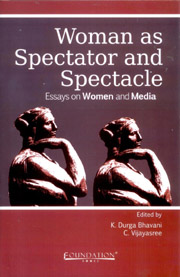Book contents
- Frontmatter
- Contents
- Notes on Contributors
- Preface
- Introduction
- Part I Media and Gender (In)Justice
- Part II Framing Women
- 7 Images of Women in Indian Soap Operas
- 8 “People Said I Created Pornography”: Sexuality, the Gaze and Rituparno Ghosh
- 9 Women's Issues in Telugu Films: Limits of Social Reform
- 10 A Case Study of the Reel-life ‘Wimin’ in Fire and Girlfriend: Fruition to Miso Phallicism from mere Feminism
- 11 Gender at Cyberspace: Who's Online?
7 - Images of Women in Indian Soap Operas
from Part II - Framing Women
Published online by Cambridge University Press: 05 November 2011
- Frontmatter
- Contents
- Notes on Contributors
- Preface
- Introduction
- Part I Media and Gender (In)Justice
- Part II Framing Women
- 7 Images of Women in Indian Soap Operas
- 8 “People Said I Created Pornography”: Sexuality, the Gaze and Rituparno Ghosh
- 9 Women's Issues in Telugu Films: Limits of Social Reform
- 10 A Case Study of the Reel-life ‘Wimin’ in Fire and Girlfriend: Fruition to Miso Phallicism from mere Feminism
- 11 Gender at Cyberspace: Who's Online?
Summary
A soap opera is an ongoing, episodic work of fiction/non fiction usually broadcast on television or radio and more recently on mobile phones. Indian soap operas (written, filmed, enacted and produced mostly by Indians for an Indian audience), with episodes broadcast on a daily/weekly/semi-weekly basis on Indian television channels/channel chains (Star Network, Sony Entertainment, Sun Network, Doordarshan) are not always limited to India alone, but are broadcast overseas in the UK, USA, and some parts of Europe, South Africa, and Australia.
The term ‘soap opera’ was coined by the American press in the 1930s to denote the extraordinarily popular genre of serialized domestic radio dramas, which by 1940, represented some 90 per cent of all commerciallysponsored daytime broadcast hours. The ‘soap’ in soap opera alluded to their sponsorship by soap manufacturers while ‘opera’ suggested an ironic incongruity between the domestic narrative concerns of the daytime serial and the most elevated of dramatic forms.
The defining quality of the soap opera form is its seriality. A serial narrative is a story told through a series of individual, narratively linked installments. Unlike episodic television programs in which there is no narrative linkage between episodes and each episode tells a more or less self-contained story, the viewer's understanding of and pleasure in any given serial installment is predicated, to some degree, upon his or her knowledge of what has happened in previous episodes.
- Type
- Chapter
- Information
- Woman as Spectator and SpectacleEssays on Women and Media, pp. 59 - 66Publisher: Foundation BooksPrint publication year: 2010



